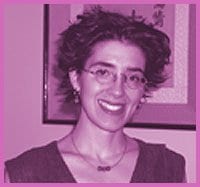Lisa Diamond knew it was only a matter of time before rightwing forces would take hold of her work, pull it out of context and use to fuel a homophobic movement.
Her latest published article is called, “Was it a phase? Young women’s relinquishment of lesbian/bisexual identities over a five-year period.” And though it was published more than a year ago, it finally trickled its way over to the attention of the reactionary group Concerned Women Of America. They’re the US equivalent of REAL Women.
Robert Knight, who is affiliated with the Concerned Women Of America, credits Diamond for discovering that in a five-year period almost two-thirds of the “non-heterosexual” women she studied changed labels. In an article circulated on rightwing websites, including Canada’s Lifesite.net, Knight argues that if gender identity can be so fluid, queer folk don’t deserve equal rights.
“Oh, no! Egads!” was the first thing Diamond wrote me after I sent her an e-mail letting her know what sparked my interested in contacting her.
Diamond directs the Sexuality And Development Laboratory at the University Of Utah. It sounds more clinical than it really is. Through the lab, she studies people she calls non-heterosexuals and their changing identities.
Her research tracked 80 non-het women aged 18 to 25. They took part in three separate interviews over a five-year period. And the very first question put to them is one that nags many of us. “How do you currently label your sexual identity to yourself, even if it’s different from what you might tell other people? If you don’t apply a label to your sexual identity, please say so.”
Then the non-het girls were presented three clear choices: lesbian, bisexual or unlabelled. And those who didn’t ascribe to any of those categories were lumped in with the unlabelled.
After five years rolled by, a quarter of the women who originally put themselves in the lesbian and bi categories cast away these descriptions, saying they now identified as heterosexual or unlabelled.
And it’s this label shifting that the homophobes lap up. Their logic is simple: if a girl can shift from lesbian, to bi, to unlabelled to hetero, then she could easily take the plunge into straightdom.
“It’s a weird bastardization of my research,” says Diamond on the phone from her office in Utah. “I’ve always known my work could be misused in that way. It’s so depressing. It’s a real mistake for the rightwing folks to mix up change with choice.”
Diamond is a self-described lesbian. (And so is her partner of 10 years who loyally followed her out to Salt Lake City from Los Angeles so the two could be together.) She says that her research demonstrates that sexual identity and desire is fluid – a simple concept that is still misunderstood. She says her research confirms what seems to be a growing phenomenon – younger generations of non-het women are growing disdainful of being pigeonholed.
Diamond started tracking the love lives of her subjects almost nine years ago while working on her master’s at Cornell University. She drove across New York state tracking down women for open-ended interviews – interviews that combined both objective and self-analytical questions. Now she continues to check in with them by telephone every few years. Since she started the research, about 60 percent of the women changed what label they ascribe to.
A couple of decades ago, women who fell into the unlabelled category (or those who may occasionally lust after men or even sleep with them now and again) were seen as traitors to a political cause. Or even worse, they were seen as sexually repressed or in denial, says Diamond.
Now many more young women think it’s too old-school to take on the lesbian label.
“Some women avoid the label because they think that other people will have certain rigid expectations of them,” says Diamond. “And word is getting out that change and ambiguity is normal.”
While most people in the queer community understand this, Diamond says the challenge is getting the message through to straight people. (Amen to that, I tell her over the phone. My straight roommate of one year keeps referring to me as lesbian to her friends and family, and I get tired of explaining my way out of it.)
“Yeah, and still in a lot of straight people’s minds, the marker of a lesbian is someone who experiences utter horror at the thought of sleeping with a guy,” says Diamond. “And that’s just not right.”
Men have an even tougher time of acknowledging ambiguous or fluctuating sexual identities.
“Male sexuality seems to be recognized as more clear-cut. And there are fewer self-identified bi men than there are bi women,” she says.
Diamond will continue to track the same group of women over the course of their lives, observing when and why they pick up and drop labels. She predicts right-wingers will continue to misrepresent her work. But she hopes the message will get through that “there’s lots of wiggle room with [sexual identity] but it doesn’t mean you can control it.”

 Why you can trust Xtra
Why you can trust Xtra


